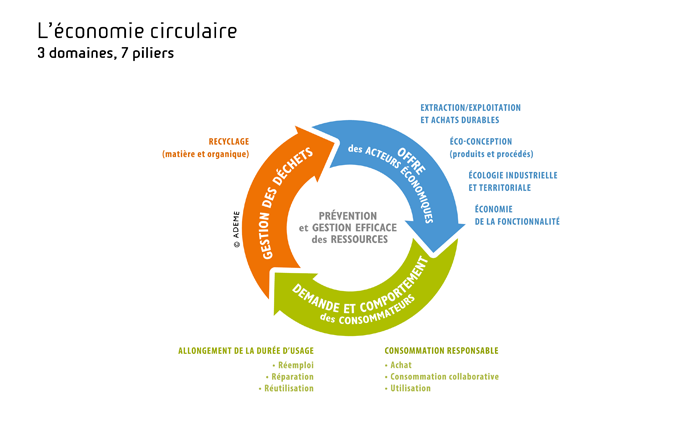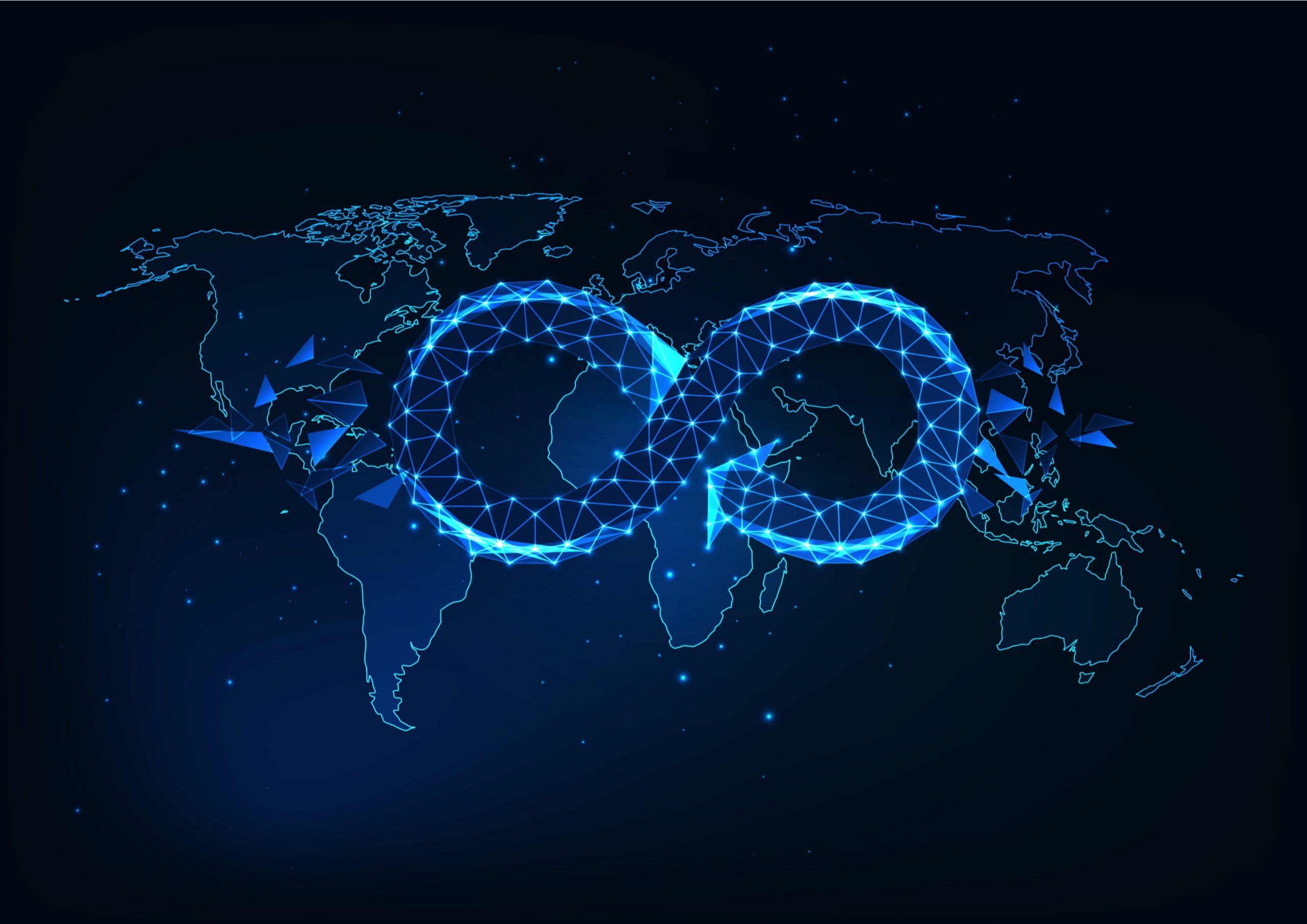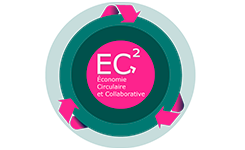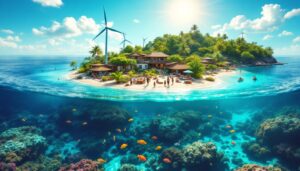At a time when environmental issues are becoming more and more pressing, the notion of the Circular Marine appears to be a promising solution to transform our economic practices. This innovative concept calls for rethinking the management of maritime resources, based on principles of circularity and sustainability. By promoting the recycling, reuse and valorization of materials from the oceans, the Circular Marine not only offers concrete responses to the challenges of marine pollution and resource depletion, but it also lays the foundations of a blue economy. resilient and prosperous. By integrating these new practices, we have the opportunity to create a future where harmony between economic development and the preservation of marine ecosystems becomes a tangible reality.
| Axis | Impact of the Circular Navy |
| Resource usage | Optimization of marine materials to reduce dependence on land resources. |
| Economic resilience | Strengthening coastal economies through sustainable practices and the valorization of marine by-products. |
| Technological innovation | Encouragement of the development of environmentally friendly technologies for fishing and aquaculture. |
| Education and awareness | Promotion of awareness about the preservation of oceans and marine ecosystems. |
| Job creation | Development of new employment sectors linked to the management of sustainable maritime resources. |
-
Waste Reduction
Transformation of used materials into new resources.
-
Resource Valorization
Optimal use of resources to minimize environmental pressure.
-
Technological Innovation
Development of innovative solutions to improve efficiency.
-
Local Economy
Strengthened local consumption promoting employment and the regional economy.
-
Intersectoral Collaboration
Partnerships between businesses, governments and NGOs for collective impact.
-
Education and Awareness
Promotion of sustainable practices within society.
-
Circular Economy
Integration of circular principles in all sectors of activity.
-
Strong Job Creation
Increased green and sustainable employment opportunities.
-
Respect for Ecosystems
Reduction of environmental impact and preservation of biodiversity.
-
Economic Sustainability
Strengthened economic models for long-term sustainability.
Table of Contents
ToggleThe Circular Marine and its Impact on the Economy

There Navy Circular stands out as a promising alternative to combat marine pollution and protect maritime resources. By reusing and recycling marine waste, this approach can transform current challenges into viable economic opportunities.
One of the main benefits of the Circular Marine is the reduction of plastic waste in the oceans. Initiatives like “Marseille City Zero Waste” aim to eradicate plastics by 2030, proving crucial for the health of marine ecosystems.
By integrating sustainable practices, the Circular Marine promotes the creation of new jobs and stimulates technological innovation. Maritime industries can thus adopt more virtuous economic models that preserve marine biodiversity. In Japan, a country ahead on the issue, the circular economy has accelerated in recent years, demonstrating the importance of such initiatives for sustainable development.
Sustainable fishing practices and ethical aquaculture are essential parts of this transition. By ensuring responsible management of fisheries resources, these methods also contribute to the food security of populations.
It is imperative that maritime innovations respect the rights of the sea and benefit local communities. The implementation of renewable marine energy projects, for example, can generate a diversification of energy sources while limiting the carbon footprint of human activities.
In conclusion, the Circular Marine could transform our economic approach, making it possible to reconcile prosperity and respect for marine ecosystems. Adopting these practices on a large scale is a crucial step in ensuring a sustainable future for our planet.
Fundamentals of the Circular Navy
There Navy Circular stands out as an innovative solution to transform our economy. By focusing on the recycling and reuse of marine materials, this approach not only helps limit pollution, but also strengthens economic sustainability.
L’impact of the Navy Circular on the economy is multiple. First, by reducing plastic waste, it helps preserve marine ecosystems while creating economic opportunities. Using West Africa’s plastic waste to fuel the economy rather than polluting the oceans perfectly illustrates this potential.
There Navy Circular is based on clear fundamental principles. This involves optimizing loops of materials so that they circulate continuously in the economy, maximizing their use and minimizing their transformation into waste. This concept is based on three essential pillars:
- Waste reduction : Limit waste production at source through better product design.
- Reuse and recycling : Promote the reuse and recycling of marine materials to produce new objects.
- Energy recovery : Use non-recyclable materials to produce renewable energy.
Thus, by adopting a circular economy in the maritime sector, we allow harmonization of industrial processes with the preservation of the environment. Moving to a circular economy is only possible with the intensive use of data, as highlighted an analysis recent on recycling issues.
Implementation in Various Sectors
There Navy Circular is based on the principle of reuse, recycle and regenerate marine resources, thus minimizing waste and the ecological footprint. By integrating these practices into value chains, it offers significant opportunities for the creation of a sustainable economy. Businesses can reduce costs by optimizing resources and foster competitiveness while actively contributing to the protection of marine ecosystems.
The adoption of the Circular Marine is crucial given the pressures placed by climate change and pollution on our oceans. Responsible production and consumption must become the norm. By developing innovative technologies, such as biodegradable materials for fishing nets or marine waste collection systems, the Circular Marine helps limit negative impacts while generating value.
Several sectors can benefit from the application of the principles of the Circular Navy:
- Aquaculture : The use of residues for the production of organic fertilizers or animal feed.
- Energy : Development of biofuels from algae.
- Tourism : Promotion of a maritime ecological tourism focused on the conservation of natural resources.
THE recycling initiatives and reuse of marine materials also have enormous potential. For example, collecting and transforming marine plastic waste into usable products or new raw materials will help combat pollution while boosting a circular economy.
Adherence to Circular Marine practices requires collaboration between governments, businesses and local communities. THE local initiatives such as pop-up resource centers can play a key role in raising public awareness and demonstrating the benefits of sustainable management of marine resources.

Frequently Asked Questions
What is the Circular Navy?
The Circular Marine is a concept that aims to transform marine resources into valuable ingredients through sustainable practices and circular economy initiatives.
How can the Circular Marine contribute to a sustainable economy?
It helps reduce waste by recovering resources from the sea, while generating jobs and preserving marine ecosystems.
What are the main advantages of the Circular Navy?
The benefits include reducing waste, promoting marine biodiversity and creating countless economic opportunities.
What types of resources can be recovered using the Circular Navy?
We can recover algae, shells, fish and other marine by-products which can be used in various sectors, such as food and cosmetics.
Is the Navy Circular applicable to all countries?
Yes, although methods and resources may vary, the principle of the Circular Navy can be adapted to different geographic and socio-economic contexts.
What initiatives currently exist around the Circular Navy?
Many initiatives are emerging, such as research projects, partnerships between industries and awareness programs to promote sustainable management of marine resources.
How can individuals get involved in the Circular Marine?
Individuals can participate by supporting businesses that adopt circular practices and engaging in local marine conservation projects.









